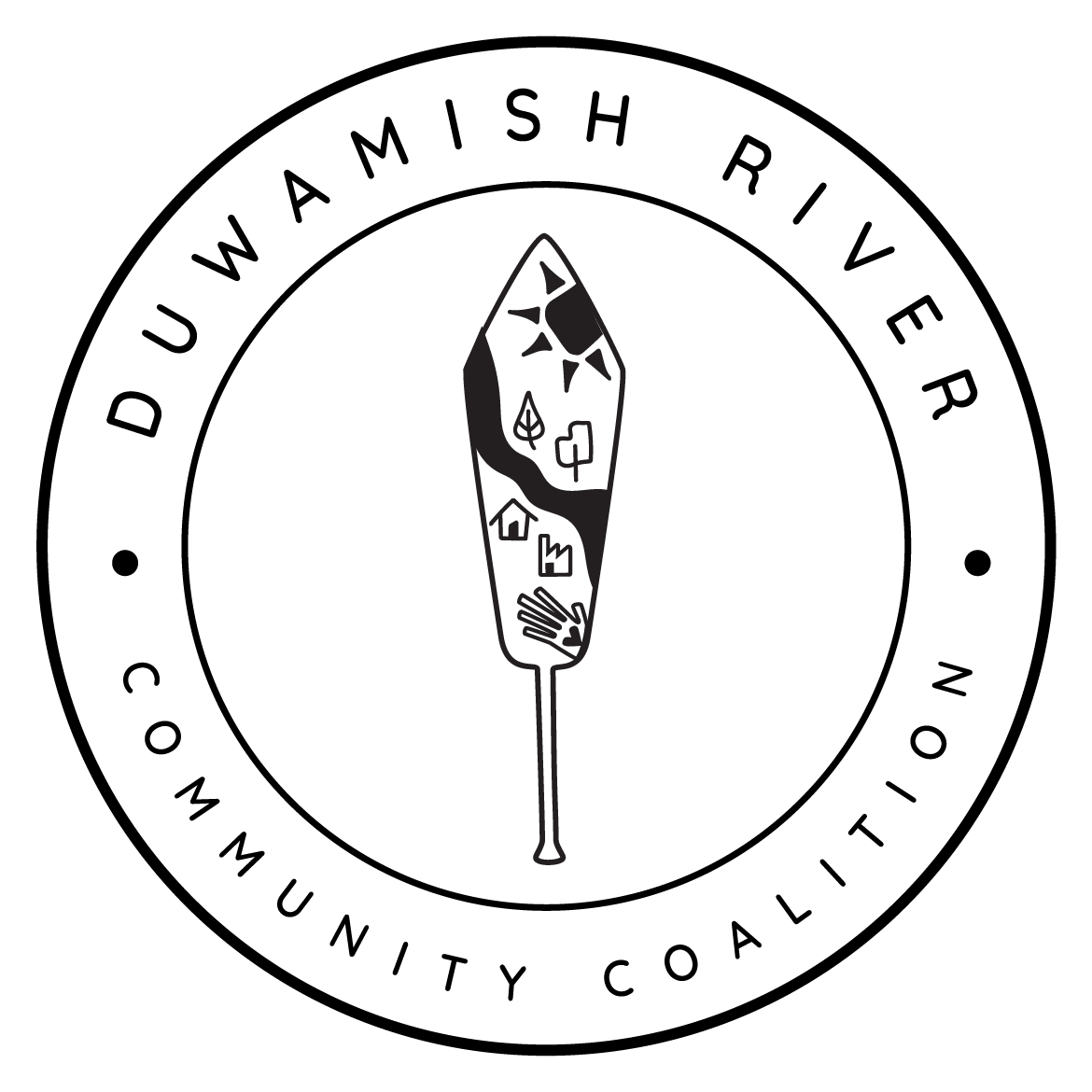The Duwamish Valley Clean Air Program
The Duwamish Valley Clean Air Program (DVCAP) was created as a direct response to community concerns when it was found that - among other disproportionate health impacts - the Duwamish Valley has the highest rates of childhood asthma hospitalizations in the County (see more below).
With community and partners, these four strategies were created to reduce air pollution and air toxics is the Duwamish Valley for a thriving community and environment.
Our program brings together a wide range of private, public, and government partners with shared interest in improving air quality and reducing the impact of industry and transportation in the Duwamish Valley. Bringing these agencies and organizations together allows us to communicate easily and transparently, compare programs, and most importantly, work together to solve problems and limit redundancy.
Through this program, we engage the community, government, agencies, scientists, health workers, etc., to meaningfully work together to identify individual ways to promote better health outcomes and root-cause, policy-level solutions.
For more information on our efforts or to get involved, email mia@drcc.org
COMMUNITY ALERT: Ash Grove Permit Modification
The Puget Sound Clean Air Agency (PSCAA) issued a draft order of approval for an air permit modification for the Ash Grove Cement Company. The public comment period was from Dec 10 - Mar 4, 2025.
The change to the air permit would remove the 30% limit on burning tires for fuel, which could emit unhealthy air pollutants.
In collaboration with Earthjustice, DRCC drafted comments opposing this modification. You can read them below or see the summary of our comments.
We will continue to updated the section above as information becomes available.
The Clean Air Program at work in the Duwamish Valley!
See the ELCP Team installing air monitors, the DV Youth Corps and DIRT Corps creating a rain garden, KCIACC discussing airport pollution, community meetings to discuss air quality concerns, box-fan filter distribution, boat tours to see Seattle’s only river and its industries (Seattle Iron & Metals), the ELCP team in Washington, D.C. lobbying, a Clean Air Program Partner Meeting, and a Community Clean Air Meeting!
Photo by Paul Joseph Brown / Ecosystemphoto.com
Our goal: Air quality that advances health equity
Residents of the Duwamish Valley are disproportionately exposed to air pollution from industries, ports, trucks, automobiles, highways, airports, railroads, and more.
The Cumulative Health Impact Analysis (CHIA) published by DRCC / TAG and Just Health Action found that Beacon Hill, Georgetown, and South Park (ZIP code 98108) rank higher in air pollution levels and poorer health outcomes compared to other neighborhoods in Seattle.
Data on the South Park and Georgetown neighborhoods also show that life expectancy is 8 years shorter than the Seattle average, and 13 years less than wealthier neighborhood of Laurelhurst in North Seattle. Additionally, the most vulnerable populations in Seattle — like children, the elderly, and foreign-born residents — live in the Duwamish Valley.
Environmental exposures identified in the CHIA include the highest concentration of diesel and benzene particles in the air in the entire city. In addition, the Duwamish Valley contains the most polluted waste sites and the Toxic Emissions Inventory sites included in Seattle neighborhoods. CHIA found that Duwamish neighborhoods are affected by diesel particulates, increasing the likelihood that residents will develop asthma. Data tells us that children in South Park and Georgetown are hospitalized more frequently due to asthma conditions.
The Clean Air Program & our partners
The DAISY Project
The Duwamish Air Improvement Study for Youth (DAISY) Project is a five-year grant from the National Institute for Environmental Health Sciences (NIEHS) to help reduce symptoms of asthma in children who live in the Seattle neighborhoods of South Park and Georgetown.
The grant will fund a local community-based air quality monitoring network to measure pollutants from cars and truck traffic and will provide low-cost air filters to families with children with asthma in South Park and Georgetown to help clean the air in their homes. Improvements in air quality in the homes of participating families and changes in asthma symptoms in their children will be measured to determine the effectiveness of the air filter intervention. The project will also fund a local Community Advocacy Team which will help guide the placement of air monitors and determine how best to use the study results to improve air quality and children’s health through policy changes and local actions.
We are monitoring for PM2.5, PM10, and NO2, which are small particles in the air that hurt respiratory health.
If you interested in looking at air monitoring data from the DAISY Project, you can sign in here with the username “Community” and the password “DRCCClarity2024!”
If you have any questions, please email joseph@drcc.org
Dots represent the DAISY air monitors in South Park (as of July, 2024)
Dots represent the DAISY air monitors in Georgetown (as of July, 2024)
Air toxics in the Duwamish Valley: The MOSS Study
In 2019, the U.S. Forest Service partnered with the Duwamish Valley Youth Corps (DVYC) to collect tree moss samples to use as bio indicators of air pollution in communities of the Duwamish Valley. Supporting partners included the DIRT Corps, Just Health Action, Street Sound Ecology, City of Seattle’s Office of Sustainability and Environment, Western Washington University’s Huxley College of the Environment, and the University of Washington’s Department of Environmental and Occupational Health.
Trained local youth from Duwamish Valley Youth Corps collected 80 samples from moss on trees in a grid covering South Park and Georgetown in 2019. Scientists collected an additional 20 samples to compare to the samples collected by the Youth Corps. All samples were analyzed for 25 heavy metals (also referred to as “air toxics”) and other elements in a US Forest Service laboratory.
The main findings from the project were:
The samples collected by the youth were consistent with the samples collected by the scientists, demonstrating that trained youth could collect reliable scientific samples;
Levels of Arsenic, Chromium, Cobalt, and Lead in moss sampled in the Duwamish Valley were higher than similar studies of moss in Seattle area parks and in residential areas of Portland, Oregon – Arsenic, and Chromium were generally twice as high as in Portland;
Metal concentrations found in the samples were highest in the industrial areas of South Park and Georgetown, especially along the Duwamish River, and lower in the residential areas.
The follow-up: PSCAA Air Toxics Study in the Duwamish Valley
“In 2020, the United States Environmental Protection Agency (EPA) awarded the Puget Sound Clean Air Agency (Agency) a Community Scale Air Toxics Grant to characterize the impacts of air toxics in communities in and around Seattle and Tacoma, Washington. The air toxics study includes updating baseline potential cancer risk values, looking at trends, and spatial analyses. The award also funded a community directed portion to follow up on community concerns about metals in the Duwamish Valley.”
“Our study’s main finding was that overall cancer risk from air toxics continues to be […] diesel particulate matter, with around 85% of the risk across all sites. The other 15% is split between estimated hexavalent chromium (~6%), wood smoke (~4%), and other compounds.”





















